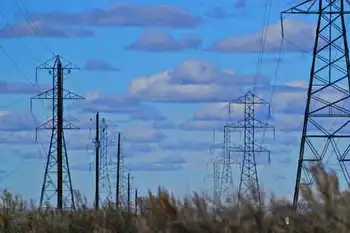Hawaii to become first state with electric car stations
By Associated Press
Substation Relay Protection Training
Our customized live online or in‑person group training can be delivered to your staff at your location.

- Live Online
- 12 hours Instructor-led
- Group Training Available
Hawaii imports foreign oil for almost 90 percent of its energy needs. One-third of that oil is used to power cars and buses on island streets.
Gov. Linda Lingle said the program would help Hawaii meet its goal of slashing fossil fuel use 70 percent by 2030.
"This is the preferred future," Lingle said at a press conference. "Today is a part of the execution of our energy independence, and our getting off the addiction to oil."
Better Place, a Palo Alto, Calif.-based company, will build the car recharging stations and provide recharged batteries for electric cars.
The company will purchase renewable energy — such as wind power — from Hawaiian Electric Co., the state's largest utility.
Better Place plans to have the stations open for the mass market by 2011. It expects to build between 50,000 to 100,000 charge spots — in parking lots, downtown streets, and neighborhoods — across the state by early 2012.
Other communities, like the San Francisco Bay area, have announced plans to host Better Place recharging stations.
But Hawaii aims to be the first to have the stations statewide.
Better Place also has deals to create electric vehicle infrastructures in Israel, Denmark and Australia.
Shai Agassi, Better Place's founder and chief executive officer, said the Nissan Motor Co.-Renault SA auto alliance has agreed to make electric cars that would be recharged at the stations.
Better Place is also talking to other automakers, including the U.S. Big Three: Chrysler LLC, Ford Motor Co., and General Motors Corp.
Lingle said other carmakers would have an incentive to follow Nissan/Renault because they would want to sell cars in the new markets Better Place is creating.
"Nobody will want to be left on the sidelines once these networks are up," Lingle said.
Agassi said the electric cars will cost the same as gasoline powered vehicles.
Over time, however, they will be cheaper to make because they will use half as many parts as cars with internal combustion engines.
Better Place picked Hawaii for the first statewide rollout in part because the islands are a contained environment, with few vehicles coming in and out, Agassi said. Better Place would need to build a bigger network across several states to serve some mainland markets.
Hawaii also has abundant renewable energy resources, including wind, solar, geothermal and wave power. This is important because Better Place won't use oil, and aims to have a "zero carbon footprint."
For example, Agassi said Better Place plans to recharge its batteries at night with power from Hawaii's wind farms. That power normally goes unused because of Hawaii's low nighttime energy needs.
Agassi sees Hawaii as an ideal place to show off Better Place technology because the state welcomes over five million tourists each year from the U.S. mainland, Japan, Canada and the rest of the world.
"If we can get them into electric cars when they rent, we do two great things," Agassi said. "One, we avoid emissions and, two, we use the opportunity to educate them, to teach them in Hawaii how it needs to be done in the rest of the world."
Lingle said the state doesn't expect to spend any money to facilitate the network.
However, she said the state may need to offer tax breaks or other incentives to encourage people to buy electric vehicles when they are first offered.











